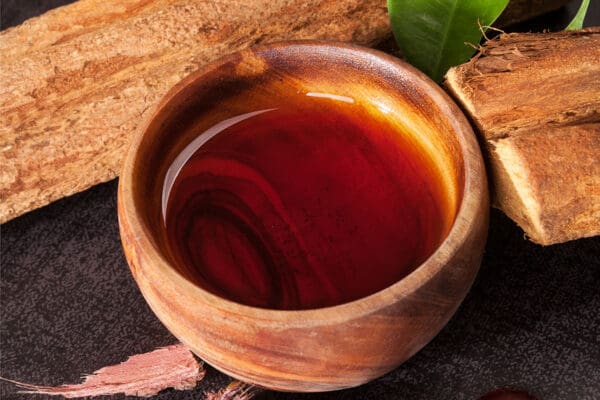Medical Editor: Dr. Benjamin Malcolm, PharmD, MPH, BCPP
What is microdosing?
A microdose is a sub-perceptual amount of a psychedelic drug. Initially popularized by Jim Fadiman in The Psychedelic Explorer’s Guide, microdosing is a rising trend both in persons that want to boost productivity and creativity as well as those attempting to heal mental illness.
The popularity of microdosing could be attributed to the fact that people can take the drug without it interrupting their schedule; in other words, it doesn’t produce psychedelic effects. A person on a microdose should be able to function normally and not feel any acute effects of the substance. However, taking even a small amount too much may result in uncomfortable emotional effects or the types of distortions to perception and thinking characterized by larger psychedelic doses.
Is microdosing backed by research?
Currently, there is very little solid research demonstrating that microdosing is effective or safe, although much is planned in the near future. Most surveys and anecdote-based research lacks a placebo or control group and may be subject to the placebo effect or expectation bias. Indeed, a couple of studies of microdosing have made the argument that microdosing leverages the placebo effect.
The Journal of Psychopharmacology published a survey study which found that out of over 1,102 people surveyed, more than half felt that microdosing helped with their mental health. Another survey study found that current and former microdosers scored lower on measures of dysfunctional attitudes and negative emotionality, and scored higher on wisdom, open-mindedness, and creativity when compared to non-microdosing controls. Yet another study found that microdosers reported increased focus and energy. These results suggest that microdosing mushrooms merits further study and may offer some people the potential to improve their mental health.
While many report reductions of anxiety or depression with microdosing, almost as many others have reported worsening of these problems or other effects such as physiologic discomfort, impaired focus or energy, or difficulty thinking. Some have also reported ‘psychedelic’ type effects such as distortions to thoughts or perceptions and more adverse types of outcomes such as panic attacks. Interestingly, one study found that despite short-term decreases in depression or anxiety that participants displayed increased neuroticism or sensitivity to negative feelings.
Who should avoid microdosing?
People who are affected by or have family histories of psychotic or bipolar illnesses should generally avoid the use of psychedelics, including microdosing.
It is not known whether microdosing is compatible, helpful, or harmful to combine with traditional treatments for anxiety or depression. However, given the safety profile of psilocybin, it is very unlikely that physical harms such as serotonin syndrome are a concern.
Is it legal to buy psilocybin mushrooms for microdosing?
The following information is provided for educational purposes. Psychable does not advocate for, endorse, or intend for this information to be used to violate any state or federal laws.
The illegality of psilocybin mushrooms can make it hard to access a quality product. Some people take the risk and grow their own at home, as psilocybin spores can be legally purchased online in most states and the rest of the necessary ingredients are relatively easy to acquire. Instructions for growing psychedelic mushrooms can be found on the internet. Keep in mind that although the spores are legally available for microscopy purposes, it is illegal to use them with the intention of growing the mushrooms.
Although possession of psilocybin-containing mushrooms is illegal at the federal level, several municipalities have decriminalized psilocybin mushrooms and other naturally occurring psychedelics. Decriminalization can be a confusing term; in short, police are instructed to make enforcement a low-level priority. In some cities and states, possessing and using small amounts of psilocybin mushrooms will not result in a felony charge or potential jail time but rather a citation, similar to a parking ticket. Check the laws of your location to find out more. Even in cities and states with decriminalization of magic mushrooms, it is illegal to sell them and federal officers can still prosecute cases.
Different strategies for microdosing
There are two main ways to microdose: on an as-needed basis or a set schedule. People who microdose “as-needed” have a sense of how a microdose affects their system, and so they use it in specific situations to accentuate the desired effects.
Two common set schedule approaches are the Fadiman Protocol and the Stamets Stack. Consumers should take note that no formal scientific research exists to validate either of these protocols, and both Fadiman and Stamets have ‘skin in the game’ via book sales and supplement sales, respectively.
The Fadiman Protocol: Originated by Jim Fadiman, this protocol involves a three-day cycle. Many microdosers keep a journal to track their progress and record daily variables such as anxiety level, appetite, mood, quality of sleep, etc. Taking note of these variables could help determine whether microdosing is appropriate for you.
The first day is the microdose day, where you ingest your microdose and observe what happens. Look out for changes in attitude, energy, creativity, mood, and anything else that arises. The second day is a transition day where some people report an afterglow effect from the day before. Take time to notice any subtle shifts. Journaling, making art, meditating, engaging in physical activity, and talking to a friend or therapist are all ways to process and integrate the day before. Day three is an ordinary day; step back and notice differences between days. Day four is the next dose day. Many people continue the cycle for one to two months and then take a break for two to four weeks between cycles. Taking breaks is important due to the lack of long-term research into the effects of psychedelics and some concern for the development of cardiac valve toxicity with consistent or long-term use.
The Stamets’ Stack: This protocol involves supplementing your microdose with lion’s mane mushroom (50-200 mg) and niacin (100-200 mg). Mycologist Paul Stamets believes that this combination synergizes to promote neurogenesis, the formation of new neurons in the brain.
Lion’s mane (hericium erinaceus) is an edible and medicinal mushroom that may improve mood, enhance focus, and support brain health. Stamets says that the addition of niacin assists in deliverability throughout the body. Some people experience uncomfortable warming and reddening of the skin, a side effect of niacin caused by the widening of blood vessels.
With this protocol, you microdose for four consecutive days followed by a three-day break. Continue the four-day-on/three-day-off cycle for one month, then stop your microdosing routine for 2-4 weeks to notice any changes and allow your body to reset.
How to microdose with psilocybin mushrooms
The first step is to establish an intention. Why are you microdosing psilocybin? Remember, intentions should be flexible enough to allow for the results to emerge in their own way. Sometimes, especially after reading anecdotal reports online, people have expectations about how it should work for them. This can lead to disappointment and can take attention away from what is actually coming up in the microdosing experience. Consider finding a coach or therapist who is experienced with microdosing phenomena and can help you on your journey. While microdoses may not produce ‘full blown’ psychedelic effects, they may subtly sensitize a person to their environmental surroundings or internal emotional content. Therefore, treating microdosing with similar intentionality, supportive therapy, and complementary modalities to psychedelic assisted therapy is likely to produce the best results. In other words, set and setting still matters even though the doses are small.
Once you have decided on a protocol to use, it’s time to prepare your doses. A great way to have consistent microdoses is to use a coffee grinder to powder the dried mushrooms. While many users online purport that caps contain more psilocybin than stems, there is no research to substantiate this claim. It is true that some mushrooms may simply be more potent than others; therefore, creating a more homogenous mixture is the best way to minimize variability between doses.
How much is a microdose of psilocybin mushrooms? For most people, a microdose is about 50-250mg (0.05-0.25g) of dried mushrooms. To measure out a microdose, you’ll need a jewelry scale that can measure in milligrams. If you are new to microdosing, try starting at the lower end of this range. Over time, you can experiment with what works best for your intentions. Taking note of your experience while microdosing could help determine the appropriate dose for you.
The microdose can be ingested in a gelatin capsule or mixed with food or drink like a smoothie. Some people experience nausea if they take the microdose on an empty stomach, while others find that an empty stomach works better for them since food can slow absorption. Many people find that the microdose increases their energy levels, so it’s recommended to take it in the morning or at least 6-8 hours before you would want to fall asleep.
Summary and conclusions
Without much clinical research to support the efficacy or safety of microdosing, some psychedelic researchers have expressed concern and made valid critiques of the microdosing trend. It may be safer if attempting microdosing to do so under the supervision and guidance of an experienced professional to help assess the potential benefits and risks. Tracking your experience and working with a skilled professional can help reduce risk and ensure the best results.








